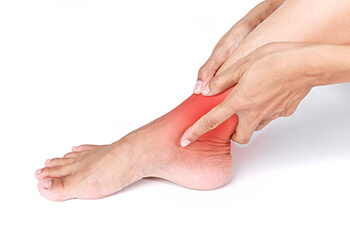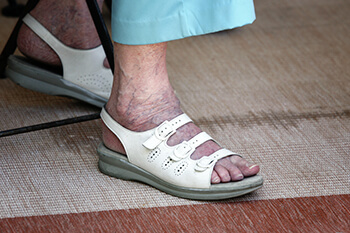
Diving can be safe and fun. However, as with most sports, injuries can occur, and awareness can help with prevention. The most common injury that might affect the feet with diving is smacking the diving board while taking off. Usually, this will result in minor scrapes but can cause a foot fracture. Most diving collisions occur from poor takeoff from the springboard or platform. Things have been invented to help limit these accidents, such as dryland diving equipment which enables one to attempt a dive using a harness over the water or trampoline. The best prevention is continuously practicing the fundamentals of the sport, including board work and takeoffs. Even the best athletes sometimes sustain injuries while participating in sports if you have fractured your foot while diving, see a podiatrist who can provide the best treatment options.
Sports related foot and ankle injuries require proper treatment before players can go back to their regular routines. For more information, contact the podiatrists of Boston Common Podiatry. Our doctors can provide the care you need to keep you pain-free and on your feet.
Sports Related Foot and Ankle Injuries
Foot and ankle injuries are a common occurrence when it comes to athletes of any sport. While many athletes dismiss the initial aches and pains, the truth is that ignoring potential foot and ankle injuries can lead to serious problems. As athletes continue to place pressure and strain the area further, a mild injury can turn into something as serious as a rupture and may lead to a permanent disability. There are many factors that contribute to sports related foot and ankle injuries, which include failure to warm up properly, not providing support or wearing bad footwear. Common injuries and conditions athletes face, including:
- Plantar Fasciitis
- Plantar Fasciosis
- Achilles Tendinitis
- Achilles Tendon Rupture
- Ankle Sprains
Sports related injuries are commonly treated using the RICE method. This includes rest, applying ice to the injured area, compression and elevating the ankle. More serious sprains and injuries may require surgery, which could include arthroscopic and reconstructive surgery. Rehabilitation and therapy may also be required in order to get any recovering athlete to become fully functional again. Any unusual aches and pains an athlete sustains must be evaluated by a licensed, reputable medical professional.
If you have any questions please feel free to contact our office located in Boston, MA . We offer the newest diagnostic and treatment technologies for all your foot and ankle needs.














